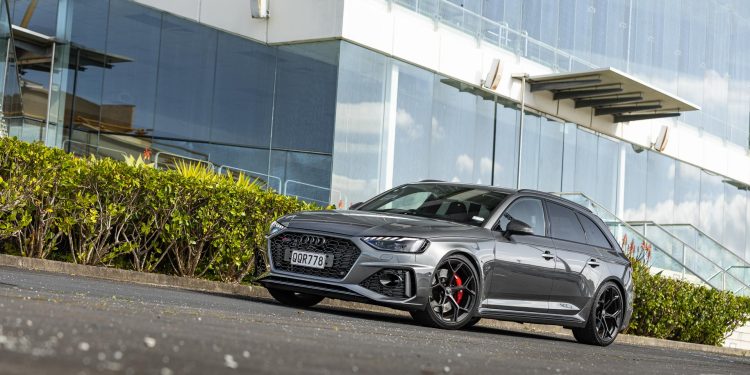2024 Audi RS 4 Competition Plus review
Words: Kyle Cassidy | Photos: Isaac Western
The RS 4 is the last of the combustion-engined A4 line. Locally, the Competition plus model marks a fitting end.
With the current Audi A4 line now at its end, that means it’s the final call for the RS 4 as well. Locally Audi NZ has issued a last hurrah with a limited number of Competition plus models up for grabs.
Audi teased RS 4 lovers the world over with the reveal of the ‘edition 25 years’ earlier in 2024, only to keep it for European consumption.
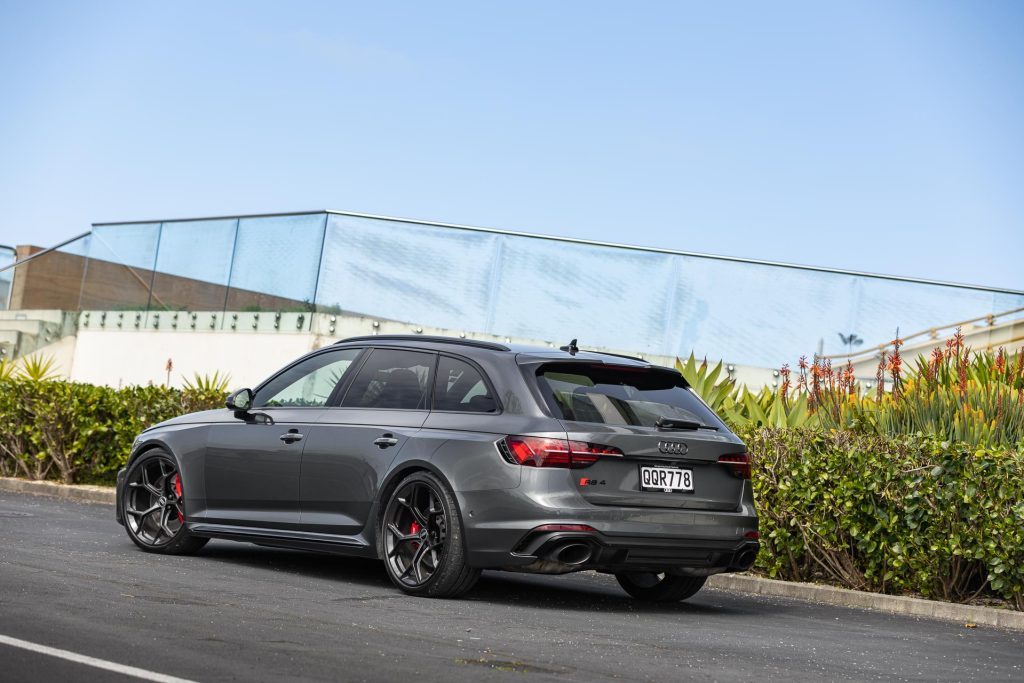
Available in heritage hues such as the striking Imola Yellow, just like the B5 RS 4, it features a 15kW power tweak and the RS sport suspension pro set-up.
This also features on the Competition plus model, but on the edition 25, the negative camber on the front axle increases while it gains stiffer control arms along with a rigidly mounted rear subframe and tweaked Torsen diff.
All sounds fascinating but the price in the UK for the yellow rocket is some forty six thousand pounds more than the standard RS 4. So we’ll make do with the Competition plus thanks.
This is a model that has been available in overseas markets for a couple of years but arriving here now, it makes a fitting send off for the RS 4.
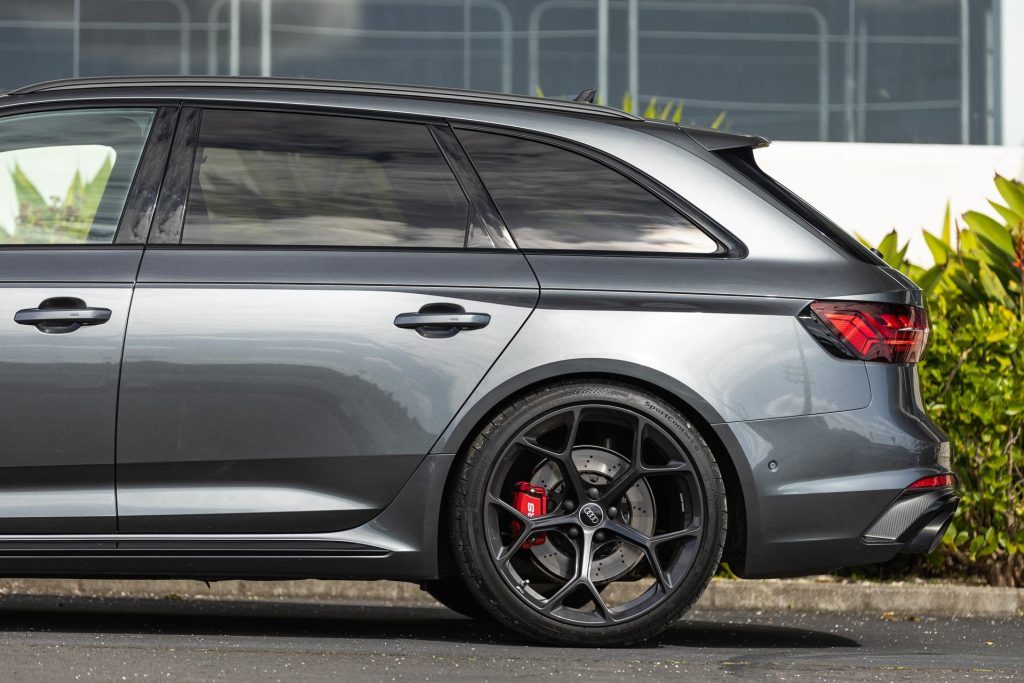
What makes it the Competition model?
That would be the suspension bits. Oh, and a range of additional extras fitted as standard.
Where the regular RS 4 Avant is $169,990, the Competition plus is $184,900. Its extras include those exquisite 20-inch hoops, carbon trim inside and out, RS bucket seats and liberal helpings of Dinamica microfiber trim.
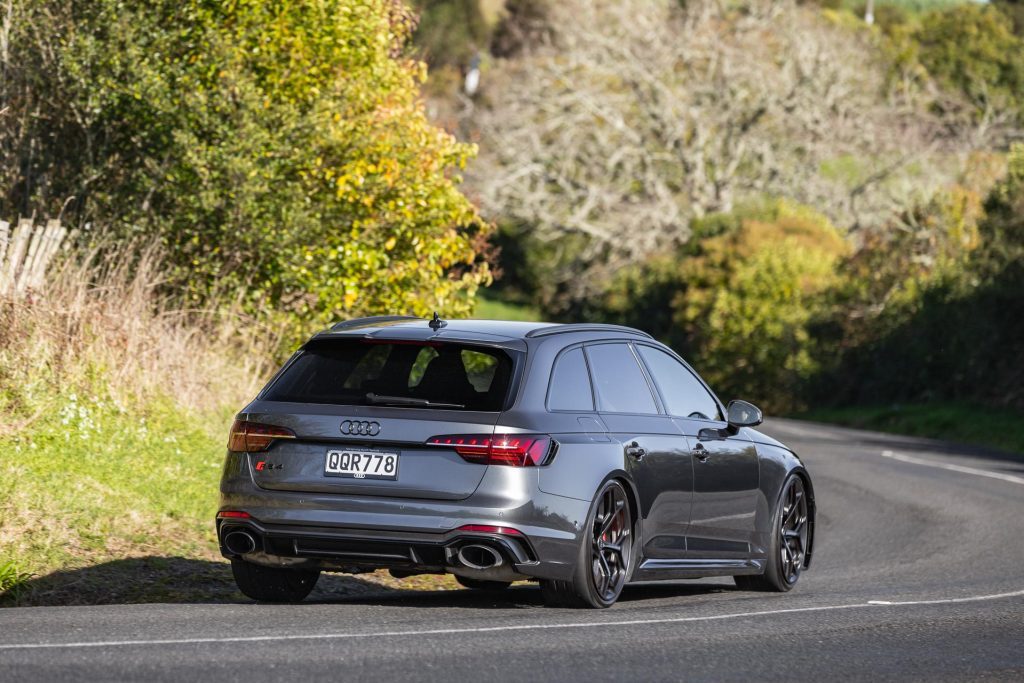
The Competition plus swaps out the Dynamic Ride Control adaptive dampers for a set of adjustable coilovers. Along with the usual quattro AWD, it gets the torque vectoring sport differential and quick ratio progressive steering.
There’s also the RS sports exhaust plus with less sound deadening, and the top speed is increased to 290km/h with track exploits in mind.
The colour choice isn’t so exciting; two blacks, two greys, blue or white. There are 26 examples up for grabs.
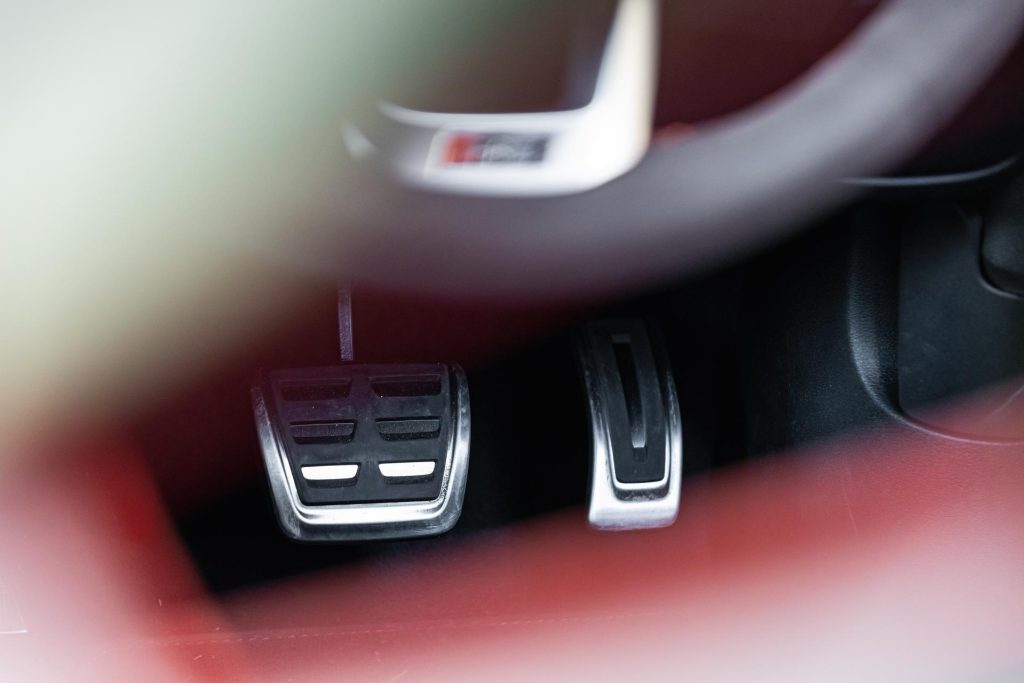
Tell us more about those shockers
The usual adaptive dampers are swapped out for a set of adjustable coilovers. These sit the car 10mm lower than your usual RS 4, while you can really crank the stance by winding it down a further 10mm (perfect for cars and coffee).
You can also adjust the rebound and compression, manually that is. We had a crack at this, but reading the book it said not to unless you’re ‘in the possession of the necessary skills required’, which immediately ruled us out.
And it’s not something you can attempt on the roadside anyway, for it involves jacking the car up and removing wheels.
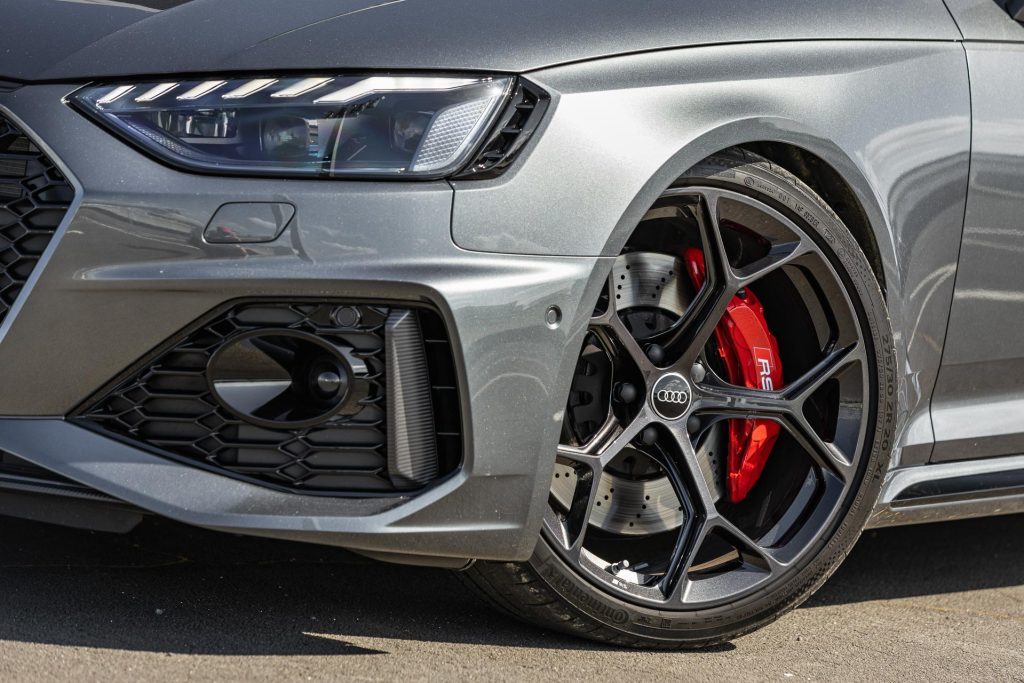
But should you want to fiddle, there is a set of C spanners in the boot to sort the ride height while the rebound can be adjusted through 16 stages and there are 13 clicks of adjustment for the compression / damping force.
This you can sort through both the low speed and high speed (for fast load changes) settings. Our tester was rolling in the recommended road use settings.
Along with the coilovers, you also get firmer springs and beefier stabiliser bars.
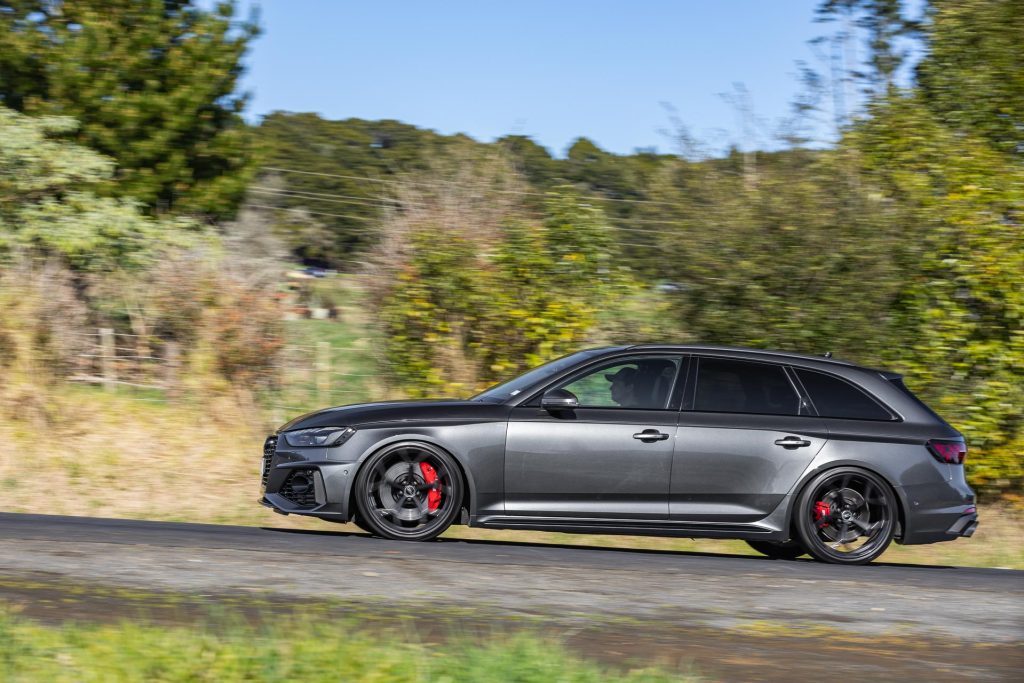
So what’s the ride like then?
Audi reckons that ‘despite its more uncompromising characteristics’ it ‘still offers the best possible balance between comfort and sportiness’.
Hmm, the ride sits on the sporty side of the ledger but then you know what you’re in for with this. Around town it’s not harsh, able to diffuse manhole covers and other lumps.
It’s over a series of bumps that the firmness is highlighted. And driveways need some caution with that lower ride height.
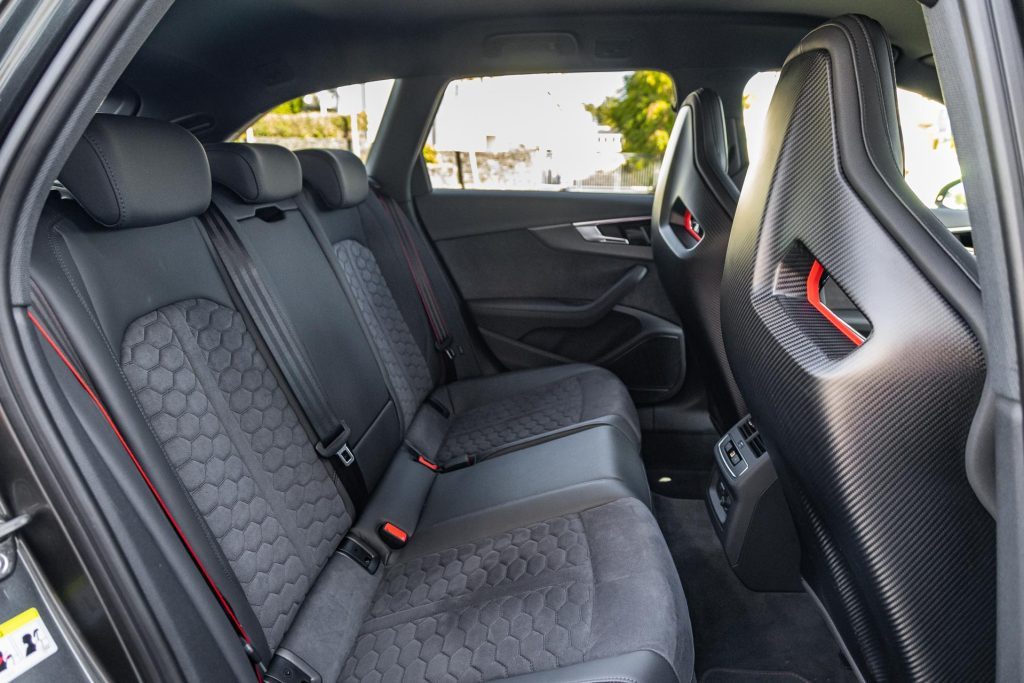
What about on the highways? Well, it depends how fast you’re talking, and how big the bumps are but this doesn’t have quite the compliance of the regular car.
We wondered if you could soften the rear off a tad, but for the high speed compression stage as per the factory, it’s set at 9 (front) and 10 (rear) of 13 steps.
So there’s not too much left to give. Conversely, the track recommendation is 1 and 5 respectively, harder than a coffin nail it would seem.
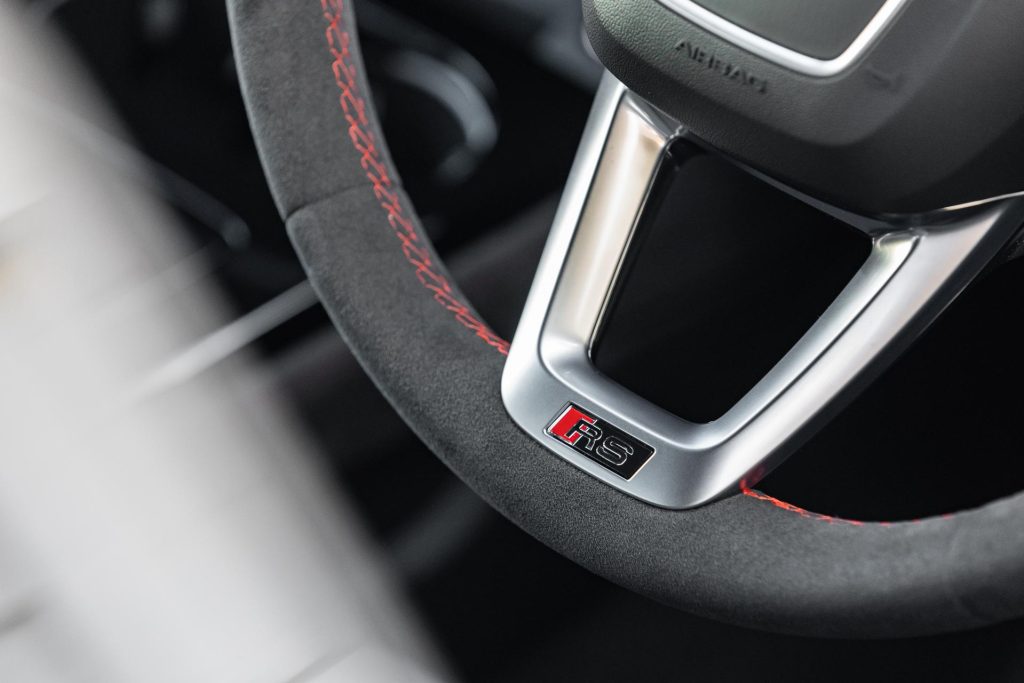
Is it any faster?
While the engine isn’t any herbier, the 2.9-litre twin turbo V6 poking out 331kw and 600Nm, it’s said the Competition model has had some gearbox tuning, the eight-speed auto snapping the changes through quicker when pumping hard.
And so it was, this reeling off a slightly quicker 0-100km/h time, clocking in at 3.85sec. Well, eventually. It launches hard, the fronts scrambling and rousing the traction control.
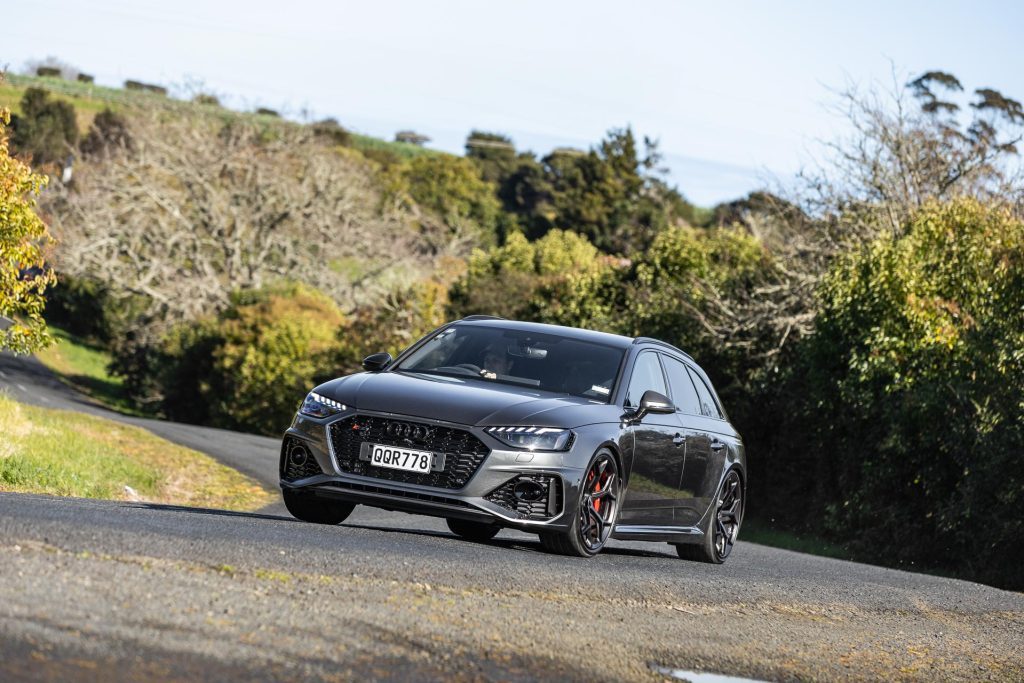
So off with that, and then it runs faster, dipping under the four-second mark thanks to the quick action of the trans.
In Dynamic mode, the cogs are rammed through more fiercely, the shift shock suitably dramatic.
But it corners okay?
The RS 4 has never had a problem rounding up the bends. Yes, this one’s a little bumpier on our roads and is more inclined to follow the contours but it still aces the curves.
You don’t miss the Dynamic Ride Control when it comes to flattening the roll. This is allergic to lean and therefore primed for the turn in, which is the crucial bit.
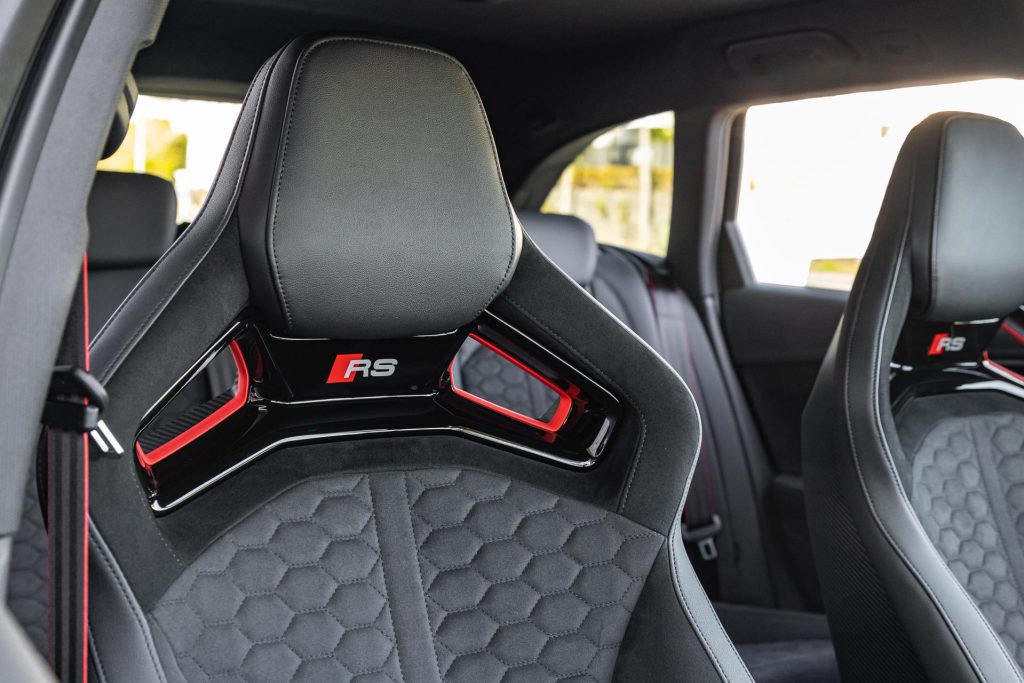
If you’re too hot here, the front end can begin to push wide. Lucky those big brakes help in that regard.
They bite quickly and there’s a meaty pedal feel that lets you calculate that corner entry, while loading those front tyres up, ready to take the bend.
The steering is light but quick and accurate. It also builds its resistance in the corner, helping you guide it around smoothly.
The RS 4 makes up for lost time with its AWD grip and that sports diff on the rear. The mechanical centre diff shifts the torque about front to rear as traction demands.
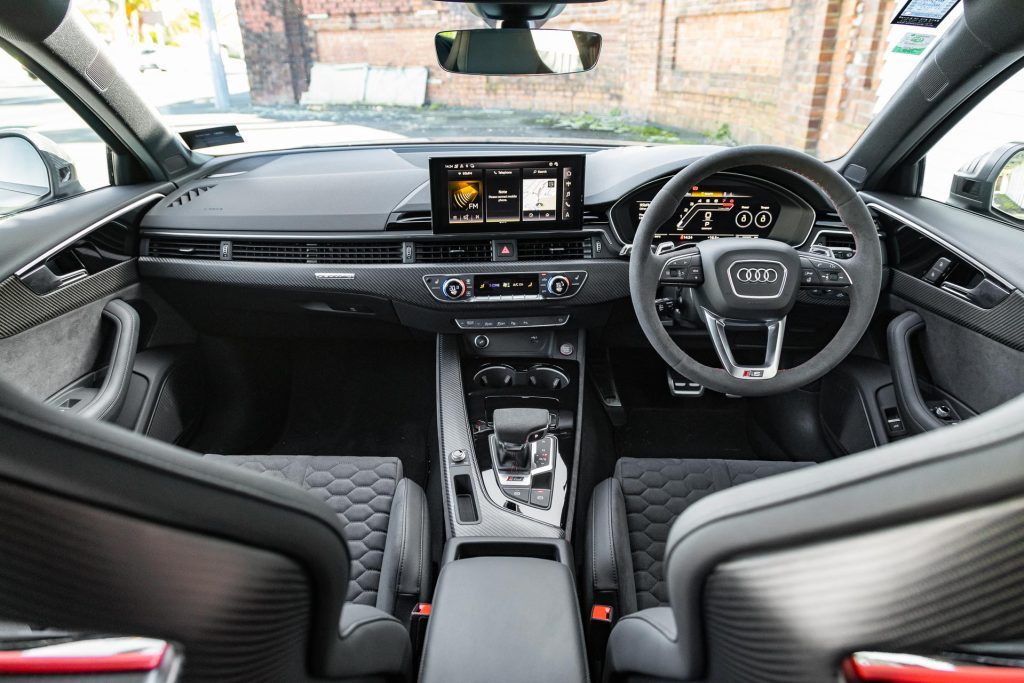
It runs a usual 40/60 torque split, but can shunt 85 per cent to the rear when need be. Along with brake nipping at each corner this has the sports diff divvying the drive torque across the rear axle.
In corners, it pushes more of the thrust to the outside wheel which helps ease the front end into the corner, warding off understeer.
You can get on the gas early to help that diff do its thing. This allows your right foot to be mashed to the firewall before the exit proper, and the RS 4 is off.
Get it right and the diff can also help rotate the rear, giving it a lively character, especially on drying roads.
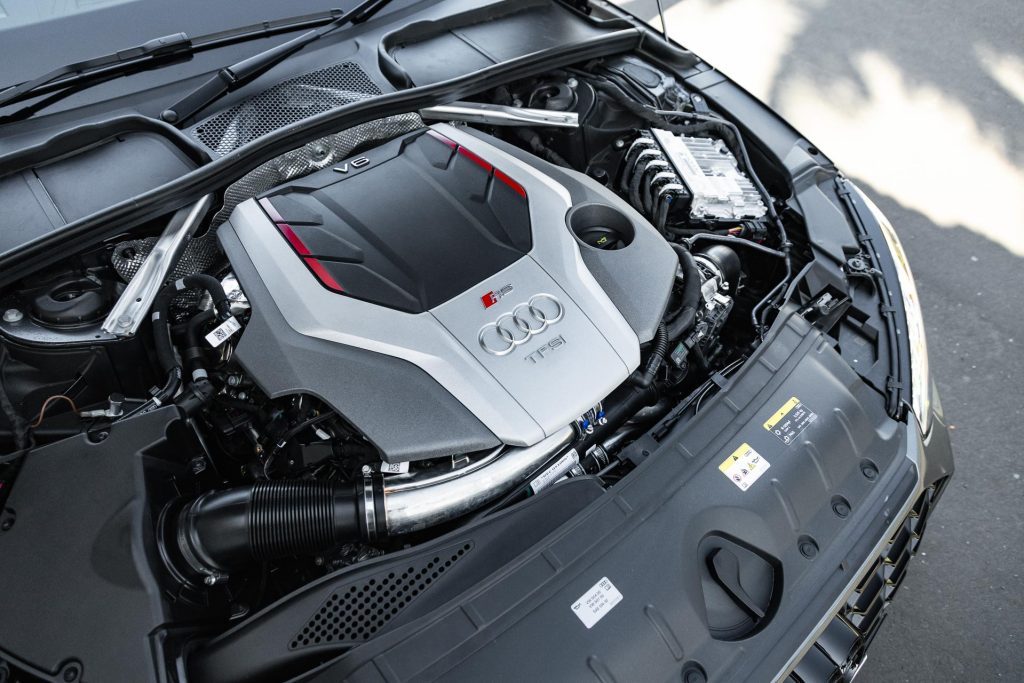
The V6 makes a good sound too. The reduction in sound deadening is focused around the engine bay, so the road roar doesn’t seem to be any worse.
It’s still quite loud but not overbearing. And neither is the six, it could be louder still but you get the idea, especially when it’s winding out past 6000rpm.
Still usable then?
Though made for the good times, it’ll likely spend more time in traffic. And for a car that is this quick, it’s as easy to drive sedately as a base spec Audi A3.
It’ll dribble along at 50km/h, the engine barely ticking over while the auto is as creamy here as it is whip fast at speed. The steering is light and quick, though the turning circle is larger than desirable.
This is electrification free, no 48-volt system here but the stop/start works reasonably seamlessly, and is quick enough on the refires.
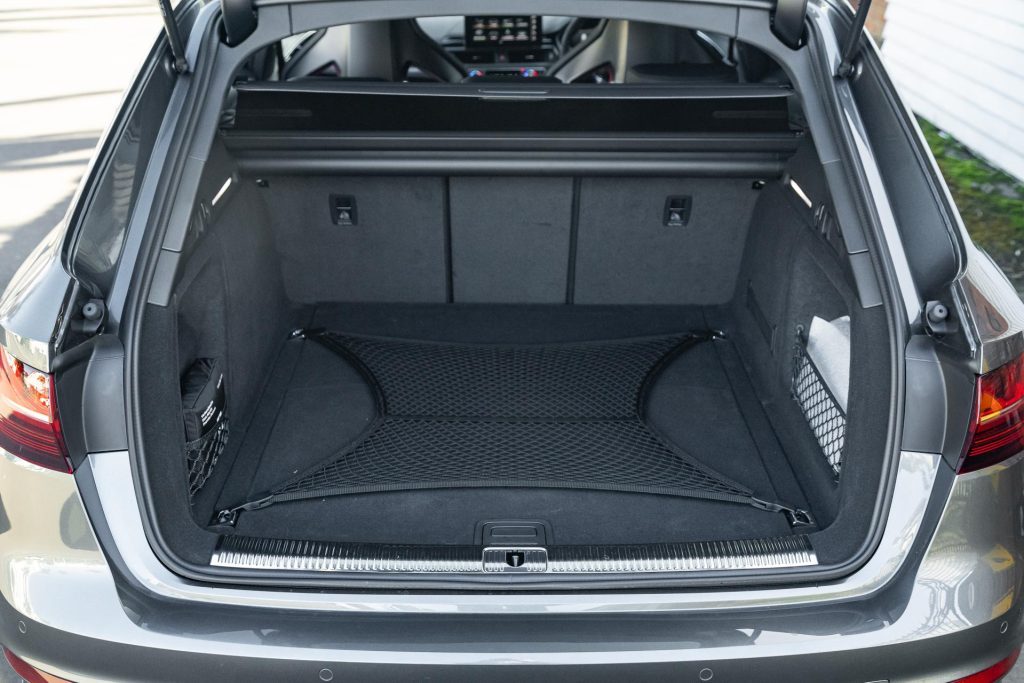
The usual safety and convenience features of a high-end luxury car are present, despite the model being the last of the line. And they are all well behaved.
While not the roomiest wagon, you still have five-door practicality, space enough for four and a well shaped luggage bay that extends out further when the seats are dropped.
Consumption wise, this was drinking at an average rate of 13L/100km. Not bad for a sub-four-second, four-wheel drive wagon with room for four and the dog.
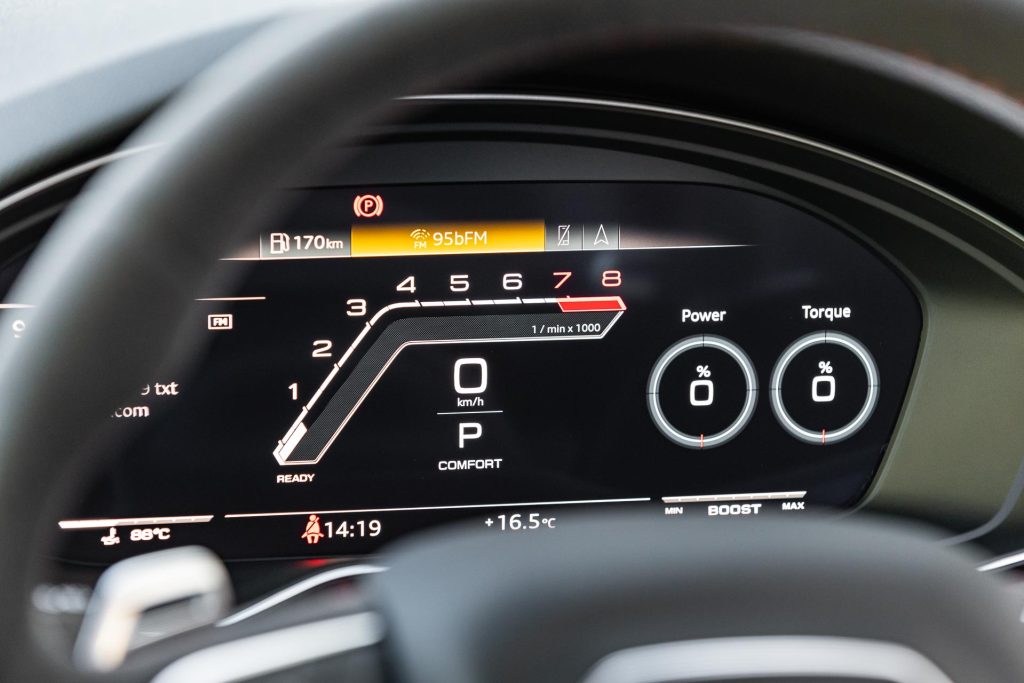
The RS buckets the enthusiast will like. Manually adjusted, you can sink down low in them. The bolstering doesn’t savage your legs on the way in but keeps you firmly in place.
You might need some DIY lumbar support on longer journeys however. The microfibre trim feels good, and also encases the wheel which is better for being perfectly round too.
Not sure how it will look after 50,000 kays, but that will be the next owner’s problem. Those alloys turn you into a nervous parker; you don’t want to go near any curbs.
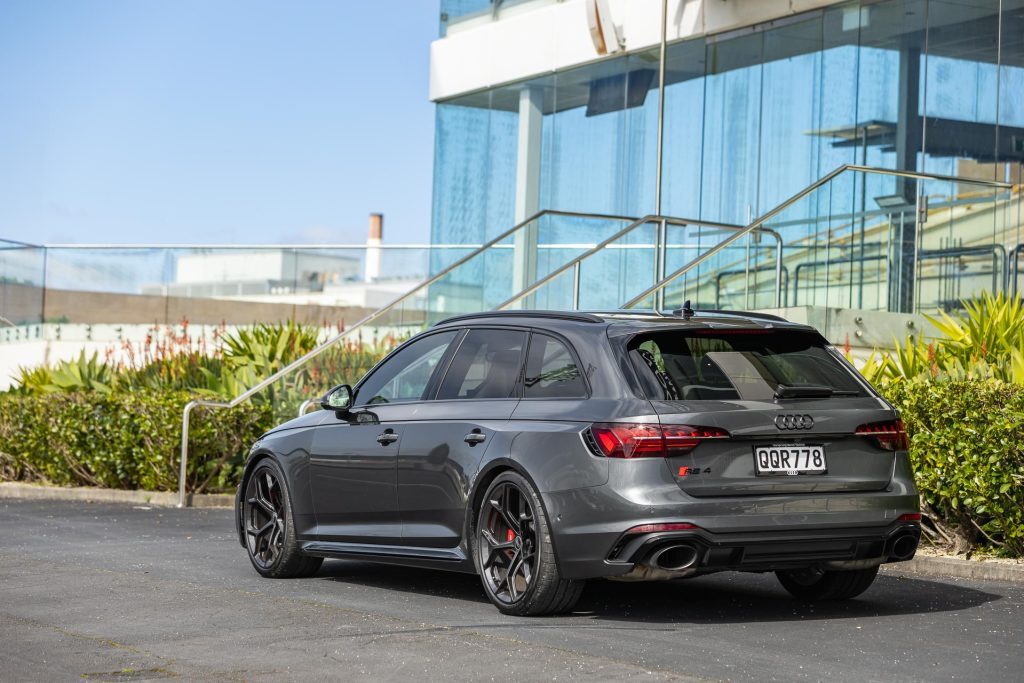
The inspired design helps expose the big compound brakes in behind, and are relatively easy to clean.
| Model | Audi RS 4 Competition Plus |
| Price | $184,900 |
| Engine | 2894cc / V6 / T / DI |
| Power | 331kW@5700-6700rpm |
| Torque | 600Nm@1900-5000rpm |
| Drivetrain | 8-speed auto / AWD |
| Fuel Use | 10.6L/100km |
| C02 Output | 243g/km |
| 0-100km/h | 3.85sec |
| 80-120km/h | 2.34sec (71m) |
| 100-0km/h | 33.45m |
| Stability systems | ABS, ESP, TV |
| Safety | AEB, ACC, BSM, LDW, RCTA, ALK, AHB |
| Luggage Capacity | 495-1485L |
| Tow rating | 1900kg |
| Fuel Capacity | 58L |
| Service intervals | 3 years/150,000 km |
| Warranty | 5 years/150,000km |
| ANCAP rating | Not rated |
| Weight | 1715kg (claimed) |
This article first appeared in the September 2024 issue of NZ Autocar Magazine.


